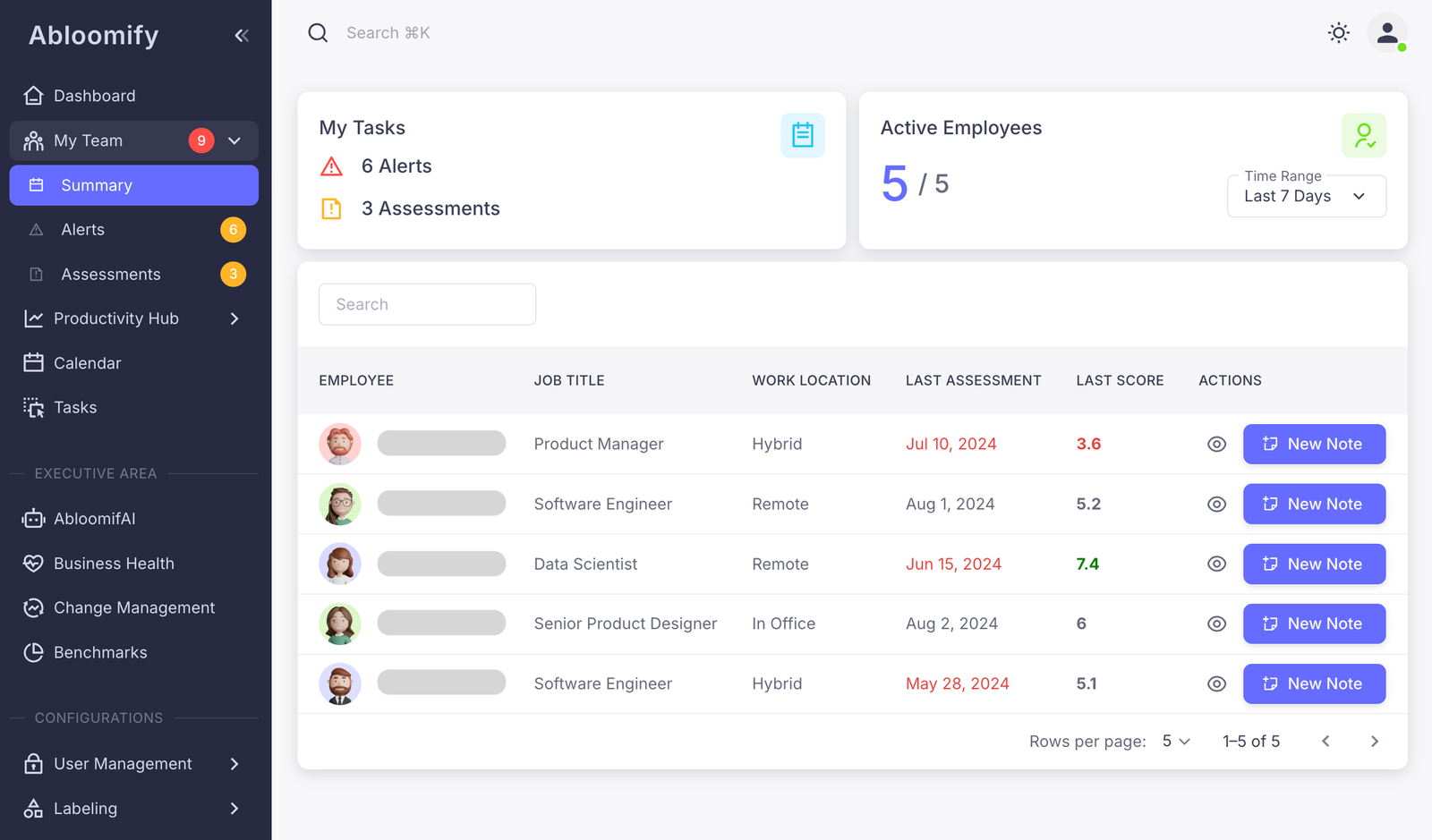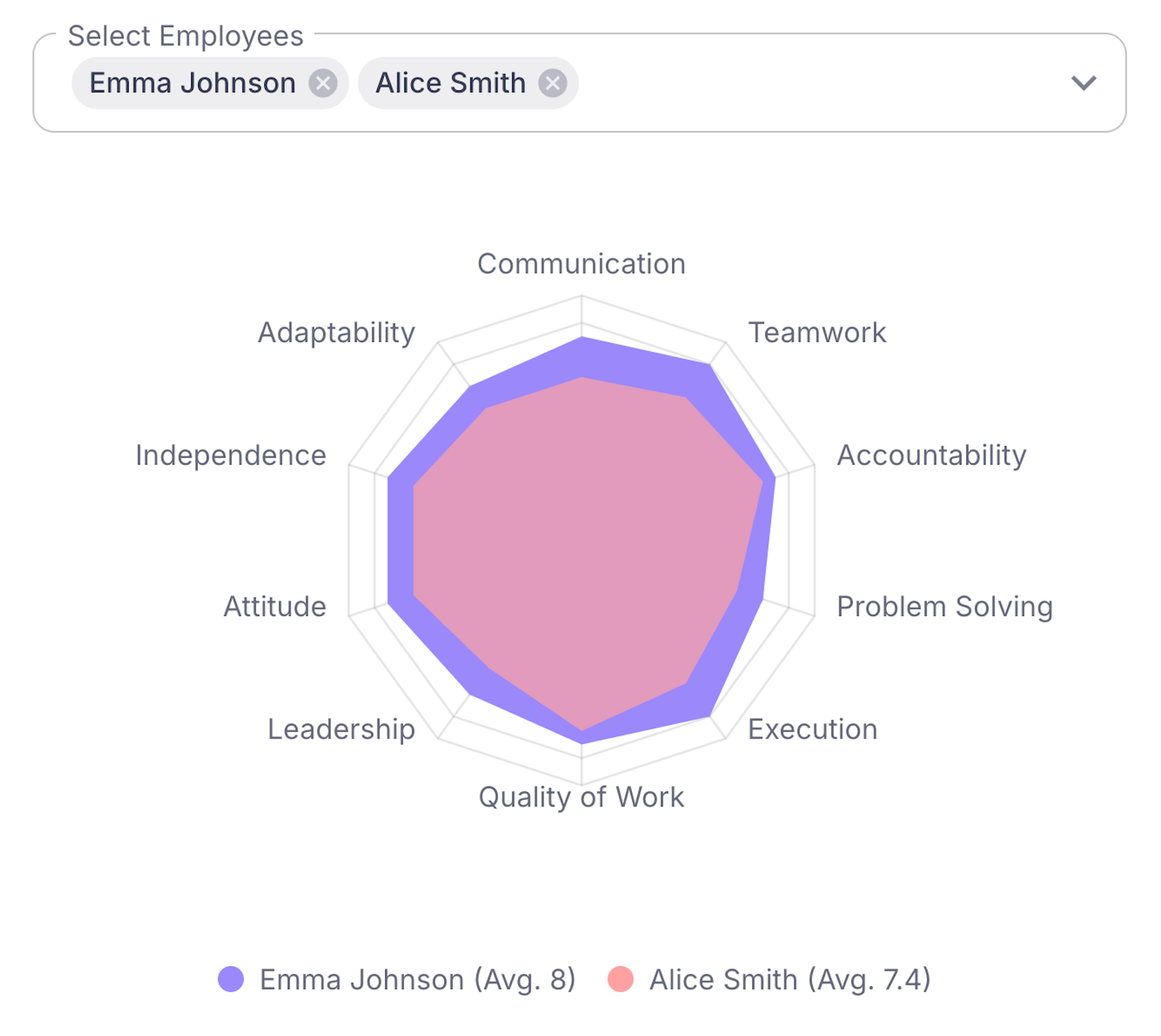Predictive analytics can transform IT workforce management by foreseeing challenges and opportunities. Technology leaders are leveraging AI tools like Abloomify to gain actionable insights, optimize team performance, and foster sustainable growth. This article dissects how predictive analytics empowers teams and why Abloomify leads the charge in AI-driven management.
Understanding Predictive Analytics in IT
Predictive analytics represents a transformative shift for managing IT teams. In essence, it utilizes historical data to predict future performance trends, identify potential risks, and uncover opportunities. For IT managers, grasping predictive analytics is not just a beneficial skill; it is critical for enhancing efficiency and productivity.
Leveraging data effectively requires understanding key elements like data sources, modeling techniques, and outcome evaluation. It offers several advantages for IT departments:
- Foreseeing potential project bottlenecks to allocate resources efficiently.
- Identifying trends to facilitate proactive decision-making.
- Optimizing team performance by addressing underperformance early.
For tech executives and founders, predictive analytics presents an opportunity to streamline operations. By visualizing performance patterns, organizations can minimize downtime and reduce costs. Additionally, identifying skill gaps enables managers to implement targeted training, improving overall team capability.
Market leaders like Abloomify exemplify how predictive insights can be tailored specifically for tech companies. By focusing on nuanced metrics, they empower IT leaders to guide their teams toward peak productivity. Abloomify’s expertise goes beyond standard analytics by delivering actionable insights and trend forecasts.
In conclusion, understanding predictive analytics is indispensable for IT managers who strive to advance their teams’ performance. It is more than just a tool for efficiency; it is a strategic approach to IT management that aligns with future growth. For more on how to harness these tools, explore unlocking the power of workforce analytics.
Predictive Analytics and Workforce Management
Workforce management in IT sectors gains a significant edge with predictive analytics. By leveraging tools like Abloomify’s AI Manager Copilot, companies can deliver productivity alerts and performance assessments efficiently. Here’s how predictive analytics elevates workforce management:
- Productivity Alerts: Proactively identify productivity patterns or dips. These alerts empower managers to intervene before small issues escalate into larger problems.
- Performance Assessments: By evaluating metrics and trends, managers can foster a culture of continuous improvement and growth.
- Automated 1:1 Meeting Scheduling: Save hours every week. Automate scheduling allows managers and employees to focus on meaningful interactions rather than logistical planning.
- Flexible Workload Balancing: Distribute tasks based on capacity and historical performance data. This approach reduces burnout and maximizes efficiency.
Effective workforce management also requires strategic forecasting. Capacity planning ensures teams aren’t stretched beyond their limits. Anticipating needs based on future projects and potential challenges keeps teams adaptable. Meanwhile, succession planning secures skills and leadership continuity, fortifying the organization against unforeseen talent losses.
These aspects underscore the importance of predictive analytics in maintaining resilient teams. By pairing workforce management tools with strategic insights, organizations can thrive in the dynamic IT landscape. For further insights on enhancing productivity using AI, visit this resource on optimizing workforce performance with AI.
AI-Driven Performance Management
AI-powered performance management systems are reshaping how we assess and develop IT employees. A tool like Abloomify’s Performance Management Framework embodies this innovation by applying AI to evaluate and guide career growth through a comprehensive 10-category assessment. This approach not only measures current capabilities but also forecasts future potential, aiding in personalized career path planning.
Continuous performance assessments are central to this model. These systems provide real-time insights and adjustments that align with evolving business goals. This iterative feedback loop ensures a nimble and responsive workforce.
Integrating 360° feedback further enriches the performance management process. By gathering insights from multiple perspectives, including peers and supervisors, teams can pinpoint areas for development and celebrate strengths. It helps create a holistic view of performance that is more accurate and actionable.
These methods optimize team dynamics by:
- Identifying skill gaps quickly.
- Fostering an environment of ongoing learning and skill enhancement.
- Aligning personal goals with organizational priorities.
By embracing these AI-driven strategies, companies can foster a culture of continuous improvement. Such integrated frameworks make sure that each team member contributes effectively, boosting overall productivity and engagement. For insights on related practices, explore this in-depth guide on performance management for software companies.
Change Management through Analytics
Navigating change within an organization can be daunting, especially in IT. Predictive analytics can significantly smooth these transitions. Abloomify offers a suite of tools designed to guide change management, ensuring seamless technology adoption and process transformations.
With predictive analytics, assess the impact of new processes before full-scale implementation. This involves evaluating anticipated challenges and identifying key areas requiring attention. Abloomify’s platform delivers insights into how tweaks might shift workflow dynamics, enabling proactive planning.
To mitigate software waste, a focus on license usage analysis is vital. Here’s how Abloomify helps:
- License Utilization: Identify underused or redundant licenses, freeing resources and reducing costs.
- Usage Patterns: Track software usage to optimize license allocation, ensuring efficient tool deployment.
- Automated Alerts: Receive notifications when licenses are nearing full utilization or becoming redundant.
By utilizing these insights, IT leaders can avoid resource wastage and facilitate smoother transitions during tech rollouts. Analytics serve as a change management ally, anticipating potential disruptions and empowering leaders with actionable data.
In transitioning to new tools or processes, predictive analytics provide foresight into potential failure points. This deep understanding aids in crafting strategies that foster organizational agility. Additionally, see how workforce analytics can further enhance productivity transformations, making analytics an essential component of change management strategies.
Embracing a Privacy-First Approach
Predictive analytics tools can feel like a double-edged sword for IT employees. While they offer invaluable insights, they can also prompt privacy concerns. A privacy-first approach becomes essential here. By prioritizing employee trust and offering aggregate insights instead of invasive monitoring, companies can alleviate anxiety and foster a positive work environment.
Take Abloomify as a prime example. Through their innovative platform, they provide insights without crossing the line into privacy invasion. They focus on patterns rather than personal data, ensuring that employees feel secure.
– Employee trust translates to better engagement: When employees trust their employer to protect their privacy, they are more likely to engage openly and participate in data initiatives positively.
– Trust encourages high performance: A secure environment where data is handled respectfully can lead to increased motivation and improved overall performance.
– Privacy boosts company culture: When an organization respects privacy, it sends a strong message about its values, reinforcing a positive workplace culture.
Businesses serious about performance management and employee engagement should prioritize privacy in their analytics strategies. This aligns with a responsible performance management system, as emphasized in discussions on responsible performance management. Embracing privacy-first design in predictive analytics tools can thus be a pivotal step for tech companies aiming to drive engagement and performance.
Final words
Predictive analytics is essential for modern IT workforce management, offering data-driven solutions to optimize performance. Abloomify’s AI platform stands out with its privacy-first design, promoting high-performing teams and sustainable growth. To learn more about how Abloomify can transform your tech teams, contact Abloomify for a consultation.



